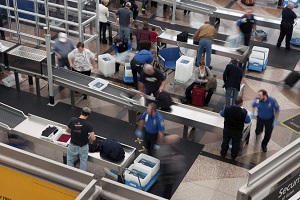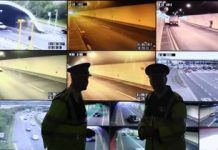Researchers at the University of Surrey in England have developed a way to scan for and identify a wide range of bomb-making materials in just 30 seconds. The chemical fingerprinting technology requires the swabbing of materials, which can then be tested. The method can identify trace amounts of a variety of chemicals used in explosives, including nitrotoluenes, trinitro triazine, hexamethylene triperoxide diamine and nitroglycerine. The method can also identify peroxide-based explosives.
Surrey researchers previously demonstrated the method, called paper spray mass spectrometry, using high resolution mass spectrometry, an imaging technology used to identify the spectral signatures of different chemicals. High resolution mass spectrometry requires bulky, expensive machinery.
In tests, the swab spray technique achieved higher sensitivity to explosive materials than previous methods that rely on portable mass spectrometry. The new method also worked on dirty surfaces, like used keyboards. The method relies on a special paper substrate and swabbing material, which produces a cleaner spectra to be read by portable mass spectrometers.
“It’s an unfortunate reality that security, especially in our airports, has to stay several steps ahead of those that wish to cause harm and destruction,” Surrey researcher Melanie Bailey said in a news release. “The current thermal based way of detecting explosive material is becoming outdated and has the propensity of producing false positives. What we demonstrate with our research is an extremely fast, accurate and sensitive detection system that is able to identify a wide range of explosive materials.” Scientists suggest the new technology could also be used to detect drugs. In addition to being sensitive, accurate and timely, the detection method produces fewer false positives.








